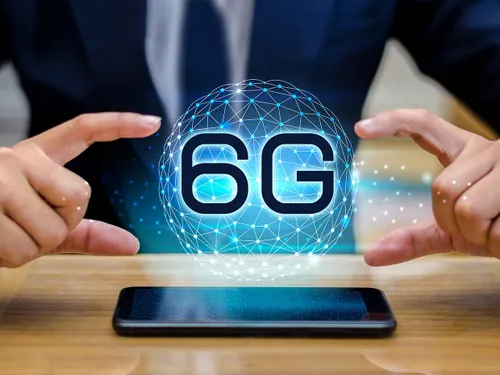
A study by scientists from China has revealed a tangible effect of terahertz radiation, which will be created by 6G communication equipment, on the biology of the brain. Permissible doses of radiation accelerated the growth of brain cells in mice by 2.5 times. Also, with regular exposure to terahertz signals, mice showed better learning ability. The discovery raises questions about the safety of 6G communications. And at the same time opens the way to brain therapy.
Today, in general, medicine does not consider the radiation of cell phones and smartphones to be dangerous for human health. However, the transition to the 6G communication standard in the early 2030s stands apart.
6G safety: Chinese researchers discovered that terahertz radiation stimulates brain cell development in mice

The future 6G cellular standard involves increasing the frequency of the radio signal in order to achieve data transfer rates up to 1 Tbps. At frequencies in the terahertz range - from 0.3 THz to 3 THz - radiation of even low power begins. To interact with a number of protein molecules in the cells of living organisms. Such molecules enter into resonant states, and cells begin to respond to signals with one activity or another.
The scientists found that a three-minute exposure to 100 microwatts of pulsed radiation at a frequency of 0.3 to 3 THz causes the neurons of mice in a petri dish to grow almost 150% faster than normal. In addition, the total length of connections between these neurons also doubles in just three days. At first glance, the effects of radiation look ominous. Although molecular analysis did not reveal any unhealthy abnormalities in the cells.
In 2009, scientists from the Russian Academy of Sciences studied the effect of strong terahertz radiation on living brain cells in mice. When irradiated for several hours a day with a power of several watts, the temperature in the brain cells increased. Their development was disturbed, they became dehydrated, and also decreased in size and were damaged in other ways. A lower dose of radiation, as found in China, can increase the production and activity of certain proteins. Such as GluA1, GluN1 and SY-38 - that stimulate neuronal growth.
In addition, exposure to 90 mW terahertz radiation for 20 minutes a day for three weeks significantly increased the number of new brain cells in young mice. These mice were able to learn certain skills more quickly than non-irradiated control mice. In mice of the old age group, irradiation had no effect in this regard.
Popular News
Latest News
Loading






